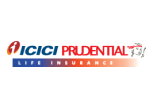ETF vs FOF: What is the difference?
In the diverse world of investment, understanding the various options available is key to making informed decisions that align with your financial goals. Exchange-Traded Funds (ETFs) and Funds of Funds (FOFs) are two such options that offer distinct investment strategies and benefits. While ETFs provide a way to invest in a basket of assets that are traded like stocks, FOFs offer a unique approach to diversification by investing in a collection of other funds.
This comparison aims to clarify the differences between ETFs and FOFs, helping investors like you choose the right vehicle based on your investment objectives, risk tolerance, and the desired level of diversification.
Table of Contents
What is FOF?
A Fund of Funds (FOF) is an investment strategy involving a portfolio that holds a collection of other investment funds rather than individual stocks, bonds, or other securities. Here's an overview in table format:
|
Aspect |
Details about FOF |
|
Nature of Investment |
An investment fund that invests in other mutual funds or hedge funds, instead of investing directly in stocks, bonds, or other securities. |
|
Diversification |
Offers a higher level of diversification by pooling a variety of underlying funds, each with its own strategy. |
|
Management Style |
Actively managed, with decisions made by the fund manager on the selection of underlying funds. |
|
Risk Level |
Risk level varies depending on the underlying funds' assets, but diversification may help mitigate overall risk. |
|
Costs |
Can have higher expense ratios due to the additional layer of management fees from underlying funds. |
|
Liquidity |
Generally less liquid than ETFs, with redemption periods depending on the fund’s terms. |
|
Investment Minimum |
May have higher minimum investment requirements compared to some ETFs. |
|
Tax Efficiency |
Less tax-efficient due to potential capital gains from frequent trading within the underlying funds. |
|
Suitability |
Suitable for investors looking for diversified exposure across various funds and asset classes through a single investment. |
FOFs provide an opportunity for extensive diversification and professional fund management, making them an interesting option for investors looking to spread their risk across various funds and strategies.
What is ETF?
An Exchange-Traded Fund (ETF) is a type of investment fund that holds assets like stocks, commodities, or bonds and is traded on stock exchanges. Here's a brief overview:
|
Aspect |
Details about ETFs |
|
Nature of Investment |
ETFs are marketable securities that track an index, commodity, bonds, or a basket of assets like an index fund. |
|
Trading |
Bought and sold on stock exchanges like individual stocks, with prices changing throughout the trading day. |
|
Liquidity |
Generally offer high liquidity, similar to stocks. |
|
Costs |
Typically lower expense ratios than mutual funds due to their passive management nature; however, brokerage fees may apply. |
|
Risk Level |
Risk varies depending on the underlying assets; can range from low to high. |
|
Diversification |
Provides diversification, with some ETFs tracking broad market indexes and others focusing on specific sectors or themes. |
|
Tax Efficiency |
Often more tax-efficient due to lower turnover rates compared to actively managed funds. |
|
Dividend Distribution |
May distribute dividends to shareholders, depending on the underlying assets. |
|
Suitability |
Suitable for a wide range of investors, from those seeking market exposure to those targeting specific investment themes or sectors. |
ETFs are popular for their flexibility, liquidity, and the ease with which they can be bought and sold, making them a favored choice for many investors.
Why Should You Invest in FOFs?
Investing in Funds of Funds (FOFs) can be advantageous for several reasons. Here's why they might be a good addition to your investment portfolio:
|
Reason |
Benefit of Investing in FOFs |
|
Diversification |
FOFs invest in a variety of underlying funds, offering a higher level of diversification across asset classes and investment strategies. |
|
Professional Management |
Managed by experienced fund managers who select and monitor the performance of underlying funds. |
|
Simplified Portfolio Management |
Provides the convenience of diversifying your portfolio through a single investment, simplifying portfolio management. |
|
Access to a Broad Range of Assets |
FOFs can include a mix of domestic, international, equity, debt, and specialty funds, providing exposure to a wide range of assets. |
|
Risk Mitigation |
The diversification of FOFs can help mitigate risk, as the performance of one fund can offset the performance of another. |
|
Strategic Asset Allocation |
Allows investors to participate in various investment strategies and themes through one consolidated fund. |
|
Suitability for Varied Investor Profiles |
Can be suitable for investors who do not have the time or expertise to construct and manage a diversified portfolio themselves. |
FOFs offer a comprehensive investment solution that can appeal to investors looking for diversification and professional management in their investment strategy.
Why Should You Invest in ETFs?
Exchange-Traded Funds (ETFs) offer several advantages that make them an appealing choice for many investors. Here’s why you might consider investing in ETFs:
|
Reason |
Benefit of Investing in ETFs |
|
Market Accessibility |
Provides easy access to a wide range of markets and sectors, from broad indexes to specific niches. |
|
Liquidity |
High liquidity as they are traded on stock exchanges, enabling investors to buy and sell shares during market hours. |
|
Low Costs |
Generally lower expense ratios compared to actively managed funds, making them a cost-effective investment. |
|
Diversification |
Offers instant diversification across the entire index or sector that the ETF tracks. |
|
Transparency |
Holdings are typically disclosed daily, offering clarity on the exact assets within the ETF. |
|
Dividend Benefits |
Many ETFs distribute dividends to their shareholders, providing an additional income stream. |
|
Flexibility in Trading |
Ability to place different types of orders (just like stocks), including limit orders and stop-loss orders. |
|
Tax Efficiency |
Often more tax-efficient due to lower turnover rates and the unique creation/redemption process of ETF shares. |
|
Suitability for Various Investment Strategies |
Suitable for both passive investors seeking market exposure and active investors looking for specific sector or thematic investments. |
Investing in ETFs can be a strategic move for investors seeking market exposure combined with the benefits of diversified, cost-effective, and flexible trading.
ETFs vs FOFs - What's the Difference?
Understanding the differences between ETFs and Funds of Funds (FOFs) is important for making an informed investment decision. Here’s a comparative analysis:
|
Criteria |
ETFs |
FOFs |
Key Differences |
|
Investment Structure |
Typically track an index, commodity, or a basket of assets and trade like stocks. |
A fund that invests in other mutual funds or hedge funds, rather than direct securities. |
ETFs offer direct market exposure, while FOFs provide exposure through other funds. |
|
Trading and Pricing |
Traded on stock exchanges; prices fluctuate throughout the day. |
Bought and sold based on their NAV, which is calculated at the end of the trading day. |
ETFs offer intra-day trading, FOFs do not. |
|
Management Style |
Usually passively managed, tracking an index. |
Actively managed, as the fund manager selects and oversees the underlying funds. |
ETFs are often passive, while FOFs involve active fund selection. |
|
Costs |
Lower expense ratios, but brokerage fees may apply. |
Potentially higher expense ratios due to additional layer of management fees. |
ETFs are generally more cost-effective than FOFs. |
|
Diversification |
Offers diversification within the tracked index or sector. |
Provides extensive diversification across various funds and investment strategies. |
FOFs typically offer broader diversification. |
|
Liquidity |
High liquidity due to their nature as exchange-traded products. |
Less liquid compared to ETFs; redemptions occur at the end of the day. |
ETFs provide greater flexibility for buying and selling. |
|
Tax Efficiency |
More tax-efficient due to the unique creation/redemption process and lower turnover. |
Less tax-efficient due to potential turnover within the underlying funds. |
ETFs have a tax advantage over FOFs. |
Investment Strategies to Keep in Mind
When investing in ETFs and FOFs, certain strategies can help optimize your portfolio and align with your financial goals:
- Understand Your Risk Tolerance: ETFs can range from low-risk (like bond ETFs) to high-risk (like sector-specific ETFs). FOFs, depending on their underlying funds, can also vary in risk. Choose according to your risk appetite.
- Diversification is Key: While ETFs offer diversification within a particular index or sector, FOFs diversify across various funds. Use these tools to balance and diversify your portfolio effectively.
- Consider the Costs: Be mindful of the expense ratios and any additional costs like brokerage fees for ETFs or management fees for FOFs.
- Liquidity Needs: If you need the ability to quickly enter and exit positions, ETFs offer higher liquidity compared to FOFs.
- Tax Implications: Understand the tax consequences of each investment. ETFs are generally more tax-efficient compared to FOFs.
- Investment Horizon: Your investment timeline can influence your choice. ETFs are suitable for both short and long-term goals, while FOFs might be better for a longer-term investment horizon.
- Market Timing vs. Time in the Market: With ETFs, you have the flexibility to time the market. However, remember the adage that 'time in the market' is often more important than 'timing the market.'
- Active vs. Passive Management: Decide whether you prefer the passive management style typically associated with ETFs or the active management of FOFs.
- Regular Monitoring and Rebalancing: Regularly review and rebalance your portfolio to ensure it stays aligned with your investment goals.
- Seek Professional Advice: Consider consulting a financial advisor for personalized advice tailored to your individual circumstances.
Conclusion
Both ETFs and FOFs offer unique advantages and can play vital roles in a diversified investment portfolio. ETFs stand out for their liquidity, lower costs, and flexibility, making them ideal for both active and passive investors. FOFs, on the other hand, offer extensive diversification and professional management of underlying funds, suitable for investors who prefer a more hands-off approach and a diversified portfolio through a single investment.
Your choice between ETFs and FOFs should be guided by your investment goals, risk tolerance, liquidity needs, and preference for active or passive management. As part of a broader investment strategy, both can be effective tools for achieving financial goals.
FAQs on ETF vs FOF
Q1: What is an ETF?
A1: An Exchange-Traded Fund (ETF) is a type of investment fund traded on stock exchanges, holding assets like stocks, commodities, or bonds, and typically tracks an index.
Q2: What is a FOF?
A2: A Fund of Funds (FOF) is an investment strategy where a fund invests in a portfolio of other investment funds rather than directly in bonds, stocks, or other securities.
Q3: How do ETFs differ from FOFs in terms of trading?
A3: ETFs are traded like stocks on an exchange with prices fluctuating throughout the day, whereas FOFs are bought and sold based on their Net Asset Value (NAV) at the end of the trading day.
Q4: Which is more tax-efficient, ETFs or FOFs?
A4: ETFs are generally more tax-efficient due to their unique structure and lower turnover rates, compared to FOFs which may incur higher capital gains taxes.
Q5: Are ETFs more cost-effective than FOFs?
A5: Yes, ETFs typically have lower expense ratios than FOFs, which often include additional management fees from the underlying funds.
Q6: Can FOFs provide more diversification than ETFs?
A6: Yes, FOFs can offer more diversification by investing in a variety of funds with different strategies and asset classes.
Q7: Which is better for a passive investment strategy, ETFs or FOFs?
A7: ETFs are often preferred for a passive investment strategy as they usually track an index. However, FOFs can also be a good choice for passive investors looking for diversified exposure through a single investment.
Q8: What are the liquidity differences between ETFs and FOFs?
A8: ETFs offer higher liquidity, allowing investors to buy and sell shares throughout the trading day, while FOFs are only traded at the end of the day based on NAV.
Q9: How do I choose between investing in ETFs and FOFs?
A9: Your choice should depend on your investment goals, risk tolerance, preference for liquidity, cost considerations, and whether you favour active or passive management.
Q10: Can I include both ETFs and FOFs in my investment portfolio?
A10: Yes, including both ETFs and FOFs in your portfolio can provide a balanced approach, leveraging the benefits of market exposure, diversification, and professional management.





























